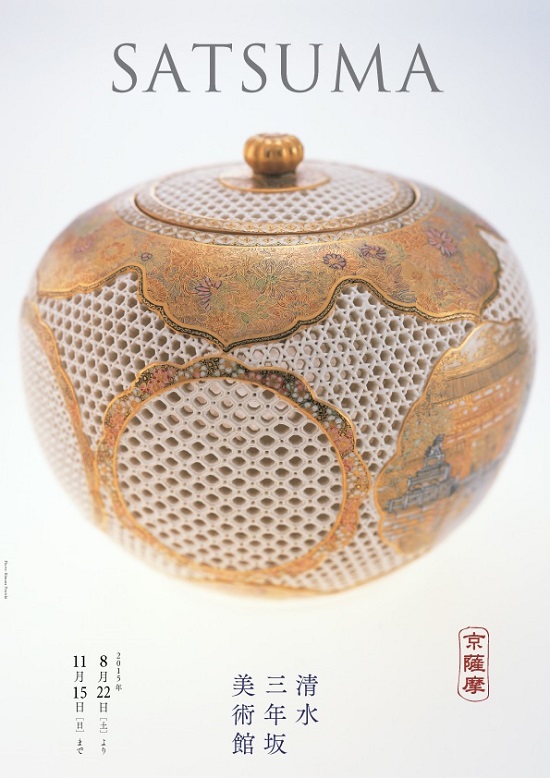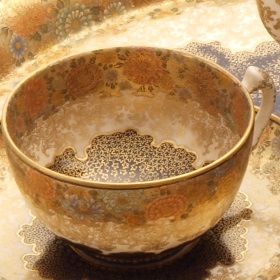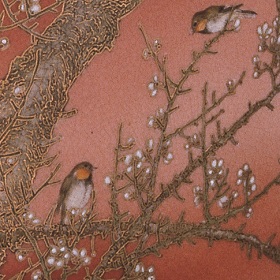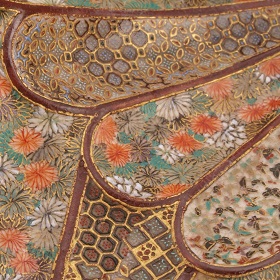
SATSUMA
Earthenware in the Satsuma kinrande (gold brocaded) style produced in Meiji era Kyoto is called Kyo-Satsuma, as opposed to original Satsuma ware made in the Satsuma area (in southern Kyushu), which is called “Hon-Satsuma”. Satsuma kinrande is a luxurious style where a gilded polychromatic enamel overglaze is applied to ivory-bodied pieces having a traditional finely crackled, transparent shiro Satsuma glaze. Such pottery, called Satsuma in the western countries, was highly valued at the Paris Expo of the late Edo period and the Vienna Expo in 1873 (Meiji 6), and among Westerners became recognized as a premium brand.
Even at Awataguchi, a traditional site that since the Edo period had produced quality pottery, a unique style of kinrande Kyo-Satsuma ware was produced early in the Meiji period. Age-old craftsman’s skills combined with original designs and innovative glazes influenced by the West to bear dazzling new works unlike anything ever before seen.
At this time because of the popularity of exported Satsuma ware, regions other than Kyoto also began producing kinrande ware, which brought confusion to the concept of Meiji era Satsuma ware, but in the West, anything given the label “Satsuma Ware”, whether produced in the Satsuma region or not, held great sway. In Japan at present, these various works are known as Kyo-Satsuma, Osaka-Satsuma, Kobe-Satsuma, Yokohama-Satsuma, Tokyo-Satsuma and Kanazawa-Satsuma, etc., according to the district in which the work was produced.
The present exhibit centers on works of export Satsuma ware that took the world by storm, including first and foremost the work of Kinkozan representing Kyoto, but also that of Yabu Meizan from Osaka and Seikozan from Kobe, in addition to pieces by Takebe Shoko from Yokohama and Keida from Kagoshima. We hope you enjoy the world of the great Kyo-Satsuma works born of that age.
 2025-12-07 / 2015-08-22
2025-12-07 / 2015-08-22 

